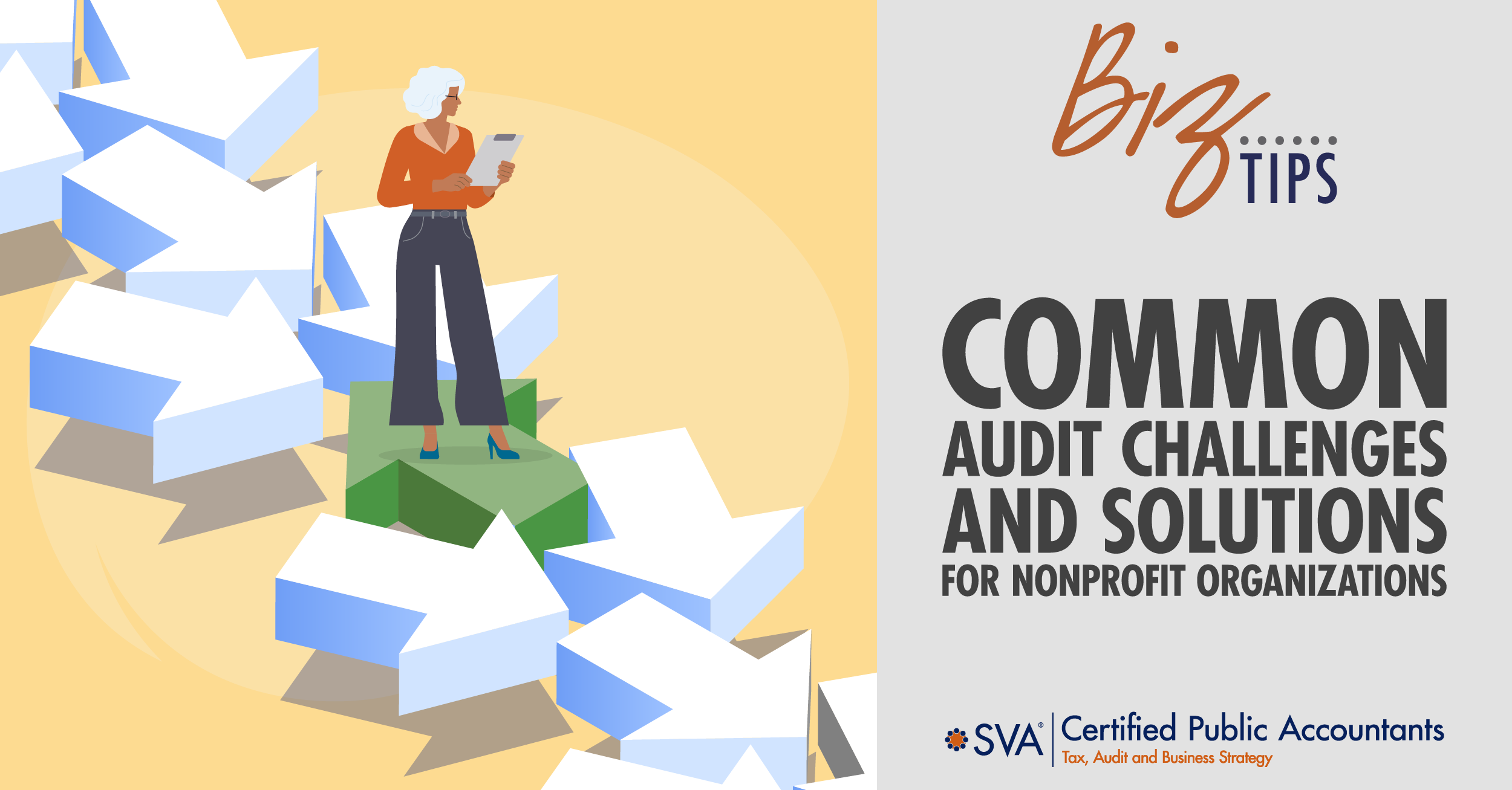Nonprofit organizations rely on annual financial audits to promote transparency, strengthen donor confidence, and ensure compliance with regulatory and grantor requirements. While essential, audits present unique challenges—from compiling proper documentation to navigating accounting complexities like restricted funds and in-kind donations.
A clear understanding of these hurdles can help streamline the audit process and enhance organizational readiness.
Understanding Financial Audits
A financial statement audit provides an independent examination of an organization’s financial statements as of a specific point in time, typically at the end of the fiscal year. For nonprofit organizations, the primary purpose of the audit is to assess whether the financial statements fairly present the organization’s financial position, results of operations, and cash flows in accordance with generally accepted accounting principles (GAAP) or another applicable financial reporting framework.
Auditors issue an opinion on the financial statements, with an “unmodified opinion” being the highest level of assurance, indicating that the statements are free from material misstatements. While a financial statement audit is separate from a compliance audit, nonprofit organizations that receive federal or state funding may also be subject to compliance audits, such as a Single Audit under the Uniform Guidance, to assess adherence to grant requirements and regulations.
(Download Video Transcript)
Audit Challenges
One of the challenges in conducting a nonprofit audit is obtaining the necessary financial information that supports the account balances in the financial records. Staff experience with audits can vary, which may slow down the process if key personnel are unfamiliar with audit requirements or financial reporting standards. Effective communication and preparation can help streamline this aspect.
Additionally, nonprofit organizations must navigate financial uncertainties, particularly when reliant on government funding. A freeze or reduction in federal or state funding can create significant financial instability, potentially impacting an organization’s ability to operate. In severe cases, auditors may need to assess whether the nonprofit can continue as a going concern, raising questions about its financial sustainability for the coming year.
Solutions for Financial Audit Challenges
Preparation
Nonprofit organizations and auditors should meet before the audit begins to set clear expectations and timelines.
Board Engagement
Since financial statements are often presented to a finance or audit committee before being shared with the full board, nonprofit leaders should align audit deadlines with committee meetings to allow ample review time.
Diversifying Revenue Streams
To mitigate risks related to funding cuts, nonprofit organizations should explore multiple funding sources, including grants, contributions, and program service revenue.
Single Audits (OMB Uniform Guidance)
Nonprofit organizations that spend a certain threshold of federal funding in a year must undergo a single audit. As of September 2025, the threshold for this audit will increase from $750,000 to $1 million, reducing the number of nonprofit organizations that must undergo this process.
These audits assess how federal funds are managed, expended, and ensure compliance with grant requirements. Procedures used follow specific federal audit guidelines, often referred to as the "Yellow Book."
Single Audit Challenges
Compliance audits can be expensive, especially for organizations that receive relatively modest federal grants. A single audit is a costly endeavor for smaller nonprofit organizations. Detailed rules regarding how grant funds can be used can make compliance complex, and proper checks and balances within the organization is necessary to be in compliance with the single audit guidelines.
Compliance with a Single Audit
| Internal Controls |
Regularly reviewing controls over the financial records and testing those controls before an audit begins. |
| Understanding Grant Compliance |
Maintaining clear documentation of how funds are spent helps ensure compliance with grant requirements. |
| Leveraging Audit Expertise |
Working with experienced auditors who specialize in nonprofit compliance can make the process smoother. |
Program Audits
Some funding agencies require an audit of a specific program rather than the entire organization. These audits, while similar to single audits, focus on a narrower scope and may be required even if total federal expenditures fall below the single audit threshold.
Program Audit Challenges
| Meeting Donor Expectations |
Private funders may have their own reporting requirements that differ from federal standards. |
| Limited Staff Expertise |
Nonprofit organizations may struggle with compliance requirements if their teams aren’t familiar with audit processes. |
Solutions for Program Audit Challenges
| Clear Documentation |
Keeping thorough records of expenditures ensures compliance with funder requirements. |
| Grant Management Systems |
Using software to track grant spending can simplify reporting. |
Compliance Audits
Compliance audits ensure that funds—whether from government grants, large donors, or foundations—are used as intended. These audits can be mandated by federal agencies or private donors who want additional oversight.
Challenges and Solutions
| Multiple Compliance Requirements |
Different funders may have varying expectations for compliance. Nonprofit organizations should maintain clear agreements and reporting structures for each funding source. |
| Increased Scrutiny |
As donors and agencies demand greater transparency, nonprofit organizations should implement strong internal controls and regular financial reviews to ensure funds are used appropriately. |
Internal Audits
Unlike external audits, internal audits are conducted by a nonprofit organization’s own staff to ensure internal policies and financial controls are being followed. Conducting this type of audit is more common in large organizations, such as national nonprofit networks or those managing significant funds.
Internal Audit Challenges
| Resource Constraints |
Many nonprofit organizations don’t have the staff or budget to conduct internal audits. |
| Identifying Issues Early |
Without regular oversight, financial issues can go unnoticed until an external audit. |
Solutions for Internal Audit Challenges
| Periodic Reviews |
Even if a nonprofit organization lacks a full internal audit department, conducting periodic financial reviews can help catch issues early. |
| Third-Party Assistance |
Some organizations hire outside consultants to conduct periodic internal reviews without the expense of a full-time internal audit team. |
Looking Ahead: The Impact of Funding Changes
Nonprofit organizations are facing increasing uncertainty regarding federal funding. A potential freeze or reduction in government grants could have widespread effects, from staffing reductions to service cutbacks. In audits, this financial stress can raise concerns about an organization’s ability to continue operating—referred to as a “going concern” issue.
To prepare, nonprofit organizations should:
Diversifying Funding Sources
Relying on a single type of funding can be risky. Expanding revenue streams through donations, memberships, or fee-based programs can improve financial stability.
Strengthen Financial Planning
Regular cash flow analysis and contingency planning can help organizations navigate funding uncertainties.
Monitor Internal Controls
Financial strain can lead to shortcuts or even fraud. Maintaining strong internal controls and independent oversight can mitigate risks.
While nonprofit audits come with challenges, organizations can navigate them successfully with preparation, clear communication, and strong financial management. SVA’s team of professionals is well-versed in the nonprofit industry and ready to help.
© 2025 SVA Certified Public Accountants

